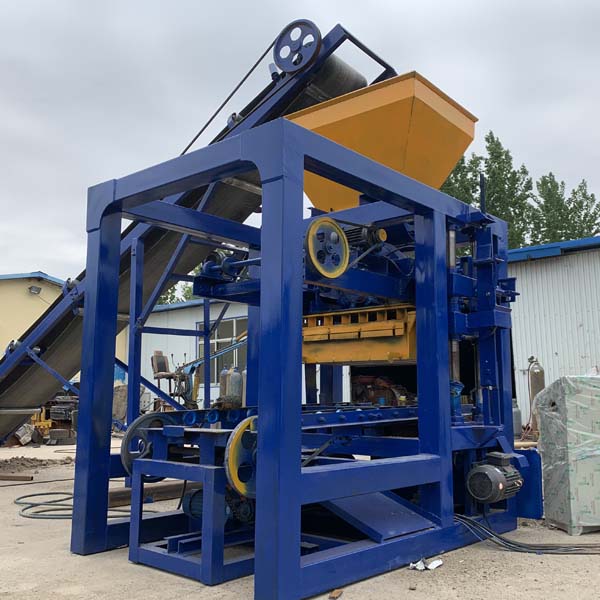
The construction industry has always been defined by its commitment to creating structures that are not only functional but also durable and aesthetically pleasing.
The pursuit of precision in construction processes has led to the development of innovative technologies that elevate building quality to new heights. Among these advancements, the high-precision block machine has emerged as a game-changer, redefining the standards for building excellence.
This essay explores the profound impact of high-precision block machines on construction quality, their technological intricacies, benefits, challenges, and the potential they hold for revolutionizing the construction landscape.
Technological Intricacies of High-Precision Block Machines
High-precision block machines represent the culmination of engineering excellence and cutting-edge technology.
At their core, these machines are designed to meticulously control every aspect of the block manufacturing process, ensuring unrivaled precision in dimensions, surface finish, and overall quality. Key technological features include advanced sensors, computerized controls, and precision mechanics that work in harmony to create blocks with minimal deviations from desired specifications.
The batching and mixing processes are optimized to ensure consistent material ratios and homogeneity, resulting in blocks with uniform strength and appearance.
The compaction mechanism employs intricate force control systems to achieve the ideal density without overcompression, preserving the integrity of the block’s structure.
Additionally, high-precision block machines often incorporate sophisticated curing systems that facilitate the development of optimal compressive strength and durability.
Benefits of High-Precision Block Machine Technology
The adoption of high-precision block machine technology brings forth a myriad of benefits that raise the bar for construction quality.
The most prominent advantage is the unparalleled precision in block dimensions and uniformity.
Inconsistent block sizes can lead to difficulties during construction, impacting the structural integrity and aesthetic appeal of buildings.
High-precision machines eliminate these concerns, producing blocks that fit together seamlessly and result in a finished product that exudes excellence.
Furthermore, the precise manufacturing process contributes to enhanced structural integrity.
Blocks produced by high-precision machines exhibit consistent compressive strength, reducing the risk of cracking, settling, or other structural issues.
This superior strength is particularly valuable for load-bearing elements of a building, ensuring its longevity and safety.
Challenges and Technological Advancements
While high-precision block machines offer remarkable advantages, they are not without challenges.
One of the primary obstacles lies in the complexity of the technology and the expertise required to operate and maintain these machines.
Skilled technicians are essential to ensure that the machines are calibrated correctly, sensors are functioning accurately, and any deviations from desired specifications are promptly addressed.
The shortage of skilled personnel can impede the widespread adoption of high-precision technology.
However, advancements in automation and remote monitoring are addressing these challenges.
Some high-precision block machines incorporate real-time data analysis and remote diagnostics capabilities, enabling operators to monitor and adjust the manufacturing process from a centralized location.
These technological advancements bridge the skills gap and enhance the efficiency of machine operation.
Revolutionizing Construction Quality
High-precision block machine technology has the potential to revolutionize construction quality across the industry.
The meticulous precision in block dimensions and strength allows architects and engineers to push the boundaries of design.
Complex geometries, intricate patterns, and innovative building forms that were once challenging to execute can now be achieved with a level of precision that ensures both structural integrity and aesthetic excellence.
Moreover, high-precision block machines contribute to standardization and consistency in construction practices.
As more builders adopt these machines, the overall quality of construction projects improves, fostering a culture of excellence that raises the bar for the entire industry.
This transformation is not limited to large-scale projects; it extends to smaller ventures, ultimately shaping the built environment in remarkable ways.
High-precision block machine technology represents a transformative force in the construction industry, redefining the standards for building quality. Through the integration of advanced sensors, computerized controls, and precision mechanics, these machines enable unparalleled precision in block manufacturing.
The benefits, from enhanced structural integrity to superior aesthetics and innovative design possibilities, are evident.
While challenges such as skills shortages persist, technological advancements are mitigating these hurdles.
As the construction industry embraces high-precision block machine technology, it is poised to revolutionize construction practices, elevate quality standards, and drive innovation.
This technology doesn’t just produce blocks; it creates the foundation for buildings that stand as testaments to precision and performance, shaping a future where the built environment embodies the pinnacle of construction excellence.
